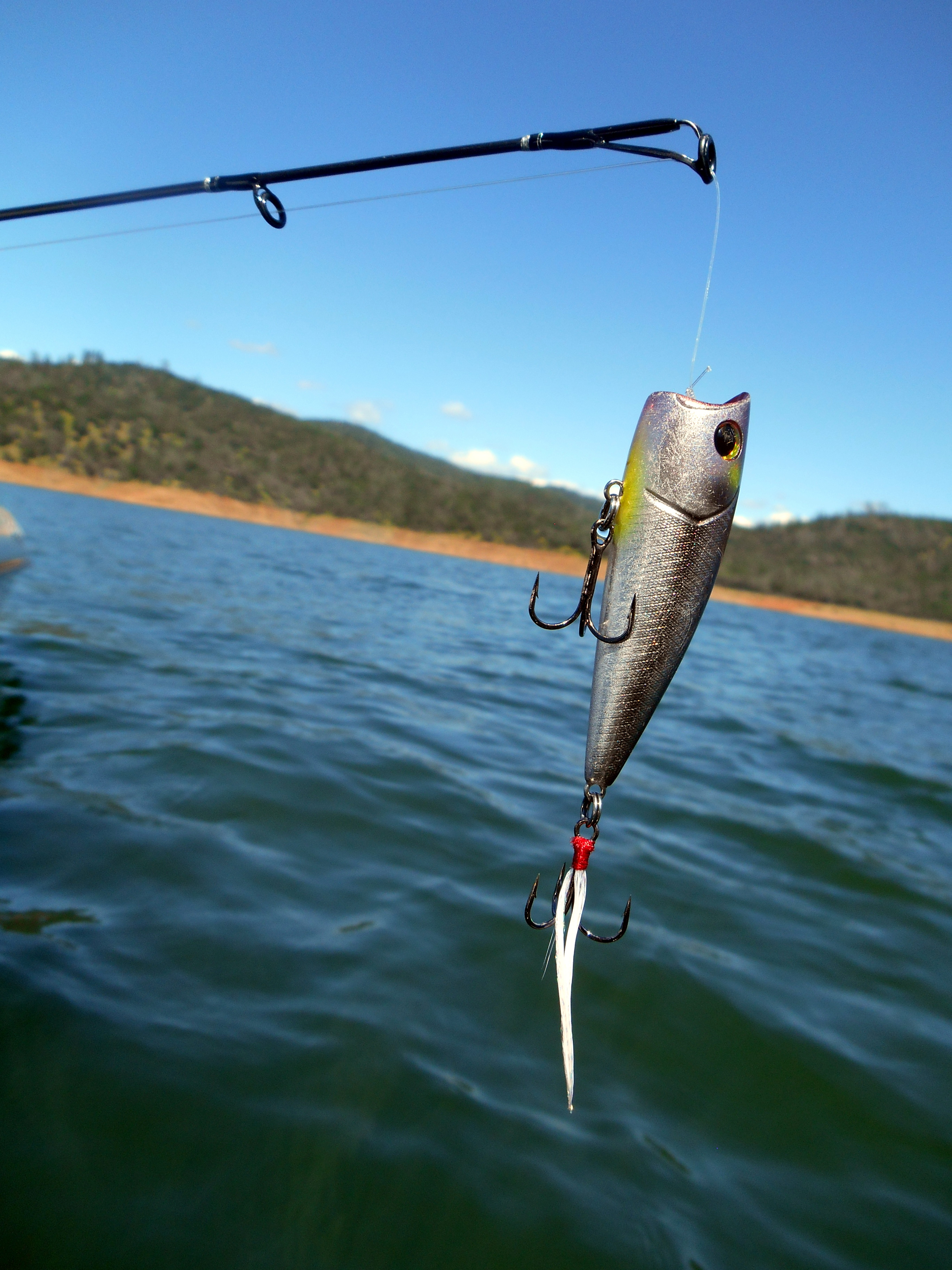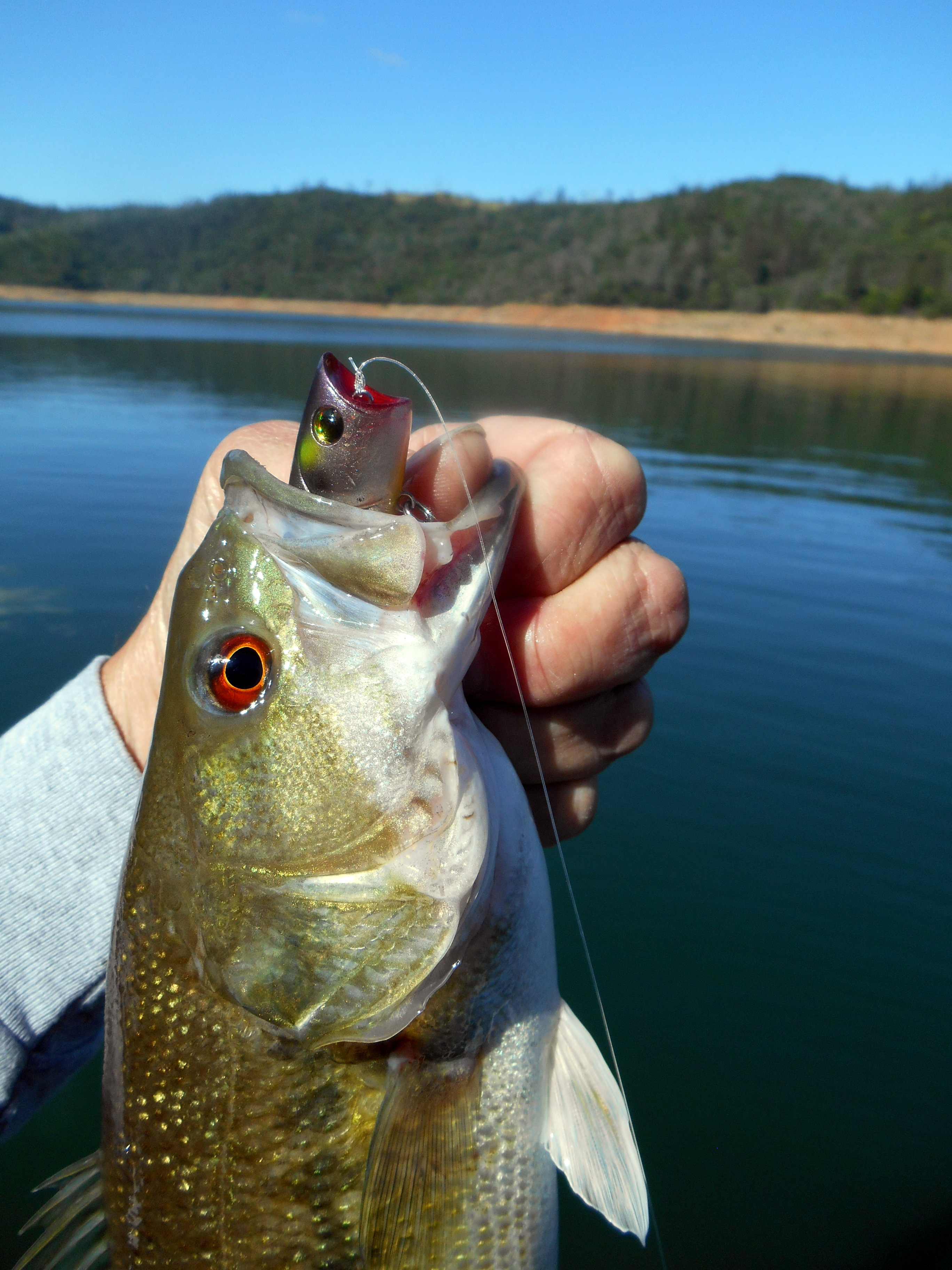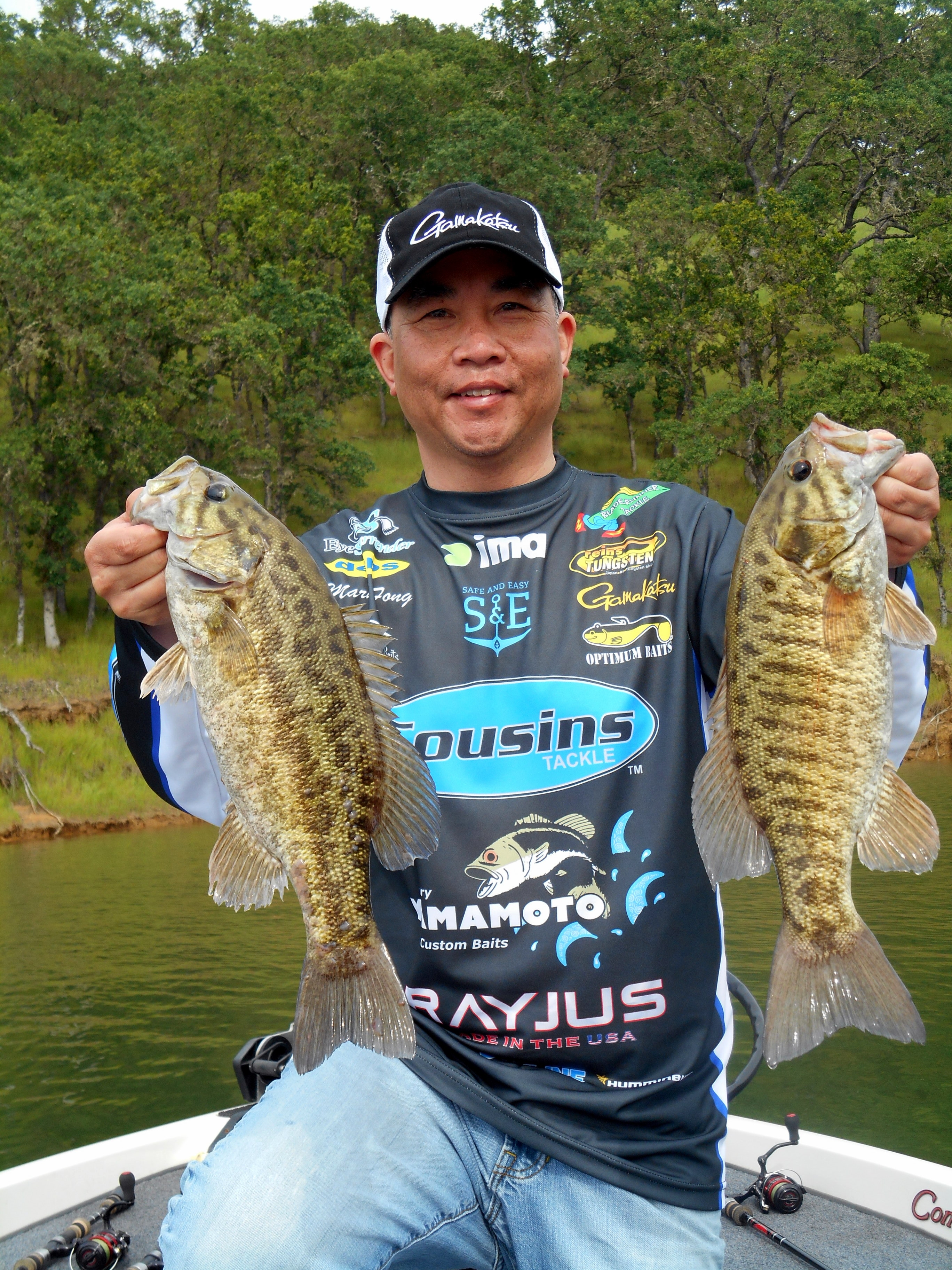Slamming Bass With A Pop

The following appears in the June issue of California Sportsman:
By Mark Fong
In recent memory, topwater poppers have become an overlooked option for many of today’s anglers. But those in the know certainly are in on the secret.
A popper is easy to recognize by its distinctive cupped mouth and slender profile. The cupped mouth pushes water and creates the signature sound of its namesake.
TIE ONE ON
A popper is an extremely versatile topwater bait. I have caught popper bass on a multitude of different fisheries spanning Northern California and the Bay Area. From small waters such as farm ponds and creeks to large waterways like Lake Berryessa, the Delta or Lake Shasta, poppers catch bass everywhere. Largemouth, smallmouth and spotted bass of all sizes will absolutely crush a popper. It may surprise some that a bait of such diminutive size can account for big fish, but they do. My personal-best popper fish pushed 8 pounds, and poppers are known for catching quality tournament-grade fish.
Poppers are powerful search baits that can draw fish from long distances. In clear water, I have seen bass come from more than 25 feet away to strike a popper. Work them over points, submerged humps or vegetation, and they are also great tools for targeting specific structural elements. Cast them around docks, flooded trees or bridge pilings.

EASY TO FISH
Poppers are very user-friendly lures that do not require a lot of experience to be successful. This makes them an ideal choice for the novice or beginning angler. To work a popper, simply employ a sharp downward motion of your wrist to action the lure. Cadence is key to triggering the bite, and it is up to the individual angler to determine how the fish want the bait presented. As such, the mood of the bass and the conditions on hand are important considerations.
Old-school wisdom is to make a cast and let the bait sit motionless briefly. Next, twitch the popper once and wait for the ripples to go away. Now repeat the process. Be on the alert, as bass will strike the bait when it is at rest and just as it begins to move again. While this retrieve does work, there are other effective presentations that should be explored as well.
Another option is to make a cast and twitch the bait several times in succession, pause the bait briefly, and repeat. Mix it up and experiment with the number of twitches and the length of the pause.
My favorite way to work a popper is to work the bait fast. I will fish the bait aggressively with a steady fast pace, making it spit and splash water. My goal is to generate a reaction strike.
Some fishermen have a problem making a solid connection with the fish. Remember to be patient when a bass strikes and don’t pull the bait away from the fish. It is easy to react to the visual nature of the strike. Instead, wait until you can feel the weight of the bass and then simply pull into the fish with your rod and reel quickly.

GEARING UP
This season I have been enjoying great results using the new Ima Finesse Popper. At 2.6 inches long, the Finesse Popper is the perfectly sized bait for bass that are reluctant to bite or relating to smaller forage. It is equipped with a subtle fish-attracting rattle and is finished with a hand-tied feather trailer on the rear treble hook. I won’t fish a popping-style bait without a feathered rear treble. When the bait is paused in between twitches, the feather will continue to pulse in the water. This is an important action that can trigger more bites.
Poppers are designed to imitate small forage fish. With this in mind, I recommend choosing colors that match the forage base. In clearwater lakes, Real Ghost Shad does a great job of mimicking not only shad but also other small baitfish such as pond smelt. In shallow grass environments where sunfish are present, a bluegill color is my first choice.
Small topwater lures fish best on a rod with a soft tip and a strong backbone. For popper duty I rely on a Cousins Tackle GP 704T popping rod. At 7 feet, it is perfect for making long casts and has the length and power to control and subdue hard fighting fish. I pair the rod with a compact high-speed baitcaster, spooled with 25-pound FINS 40G Braid. I like braid for its low stretch and strength, however braid has a way of tangling itself with treble hooks. To remedy this problem, I use a 7- to 8-foot leader of 20-pound Gamma Polyflex copolymer line tied to the mainline braid with an Alberto knot. Not only does the leader keep the bait from fouling but it also adds a measure of stretch, which helps keep fish from pulling free.
If you have never fished a popper, or maybe it’s been awhile, tie one on and see what happens; you might just be pleasantly surprised.



